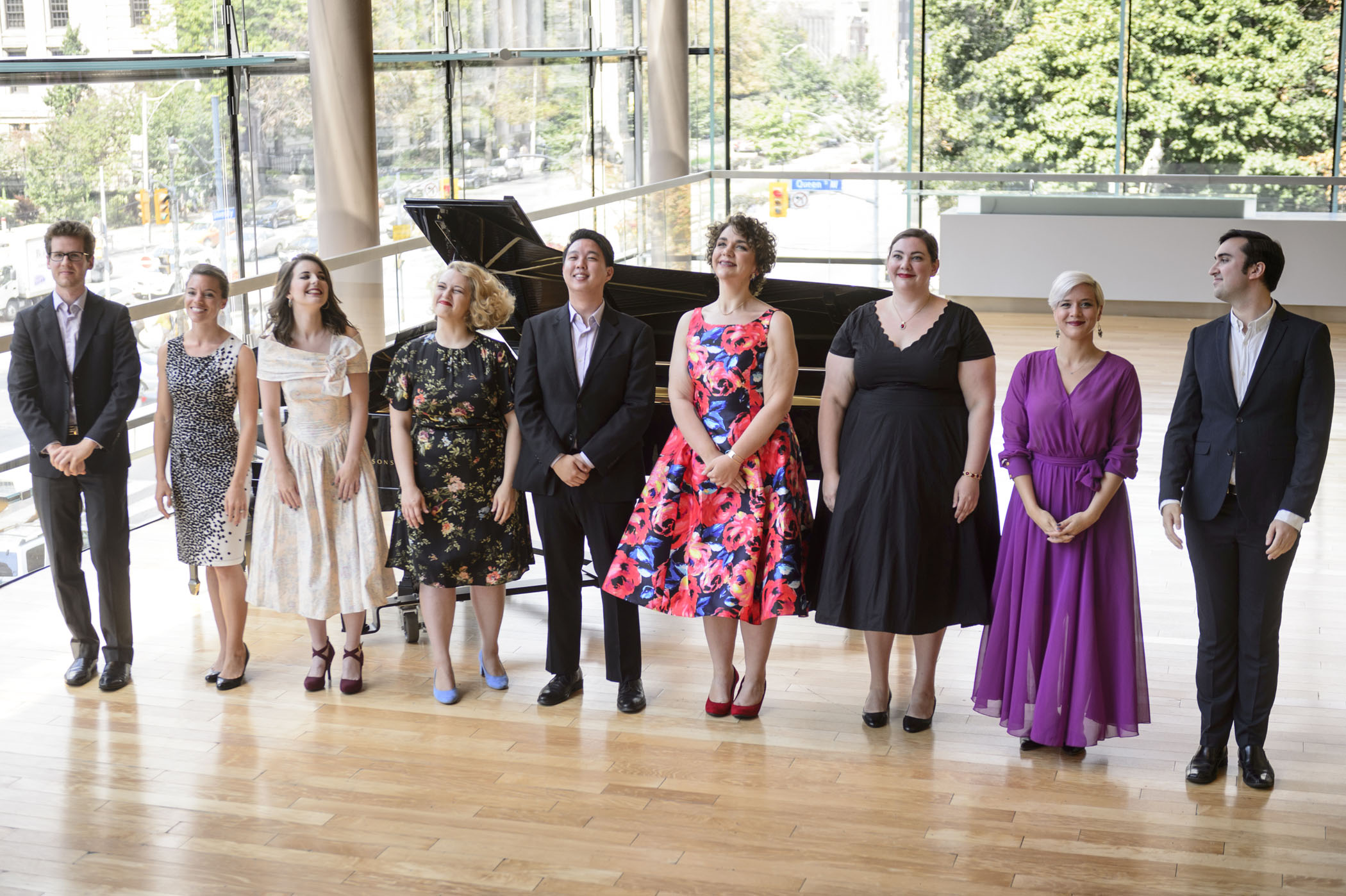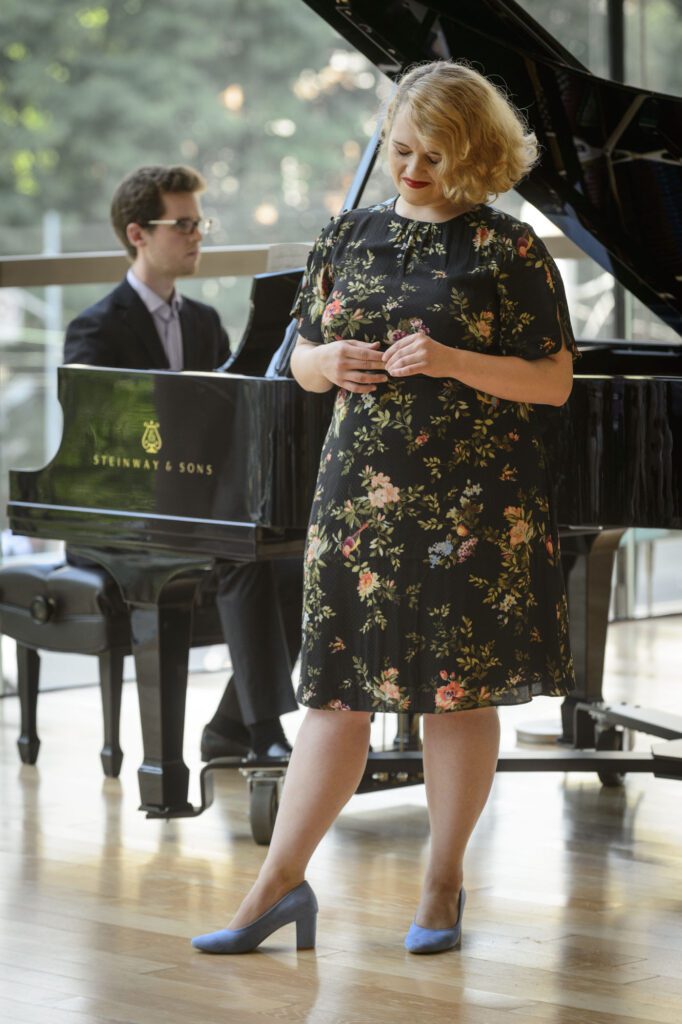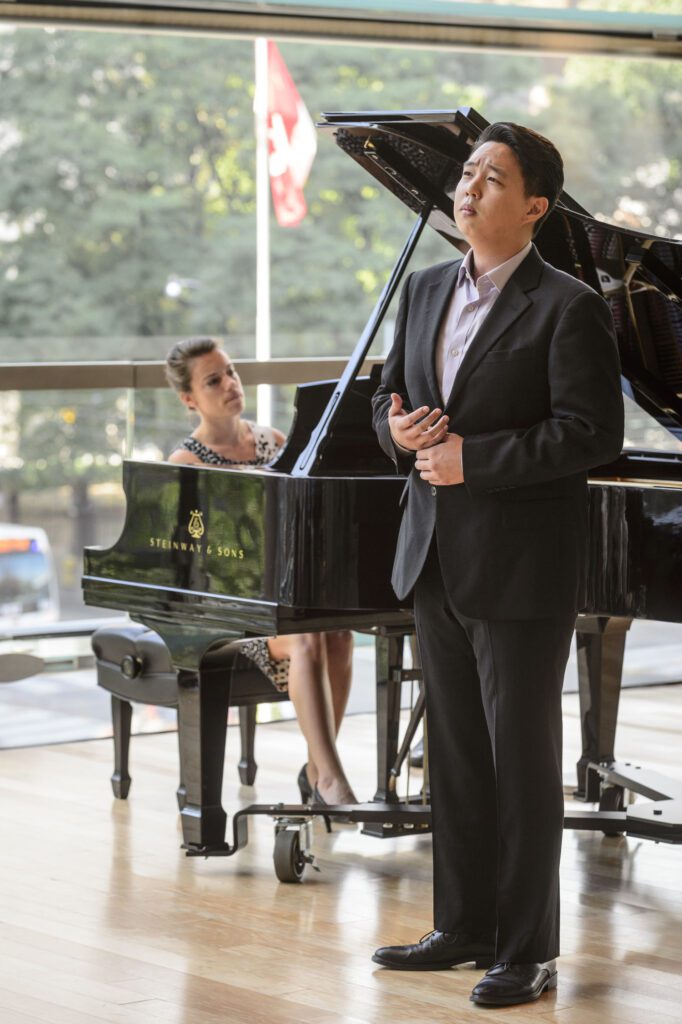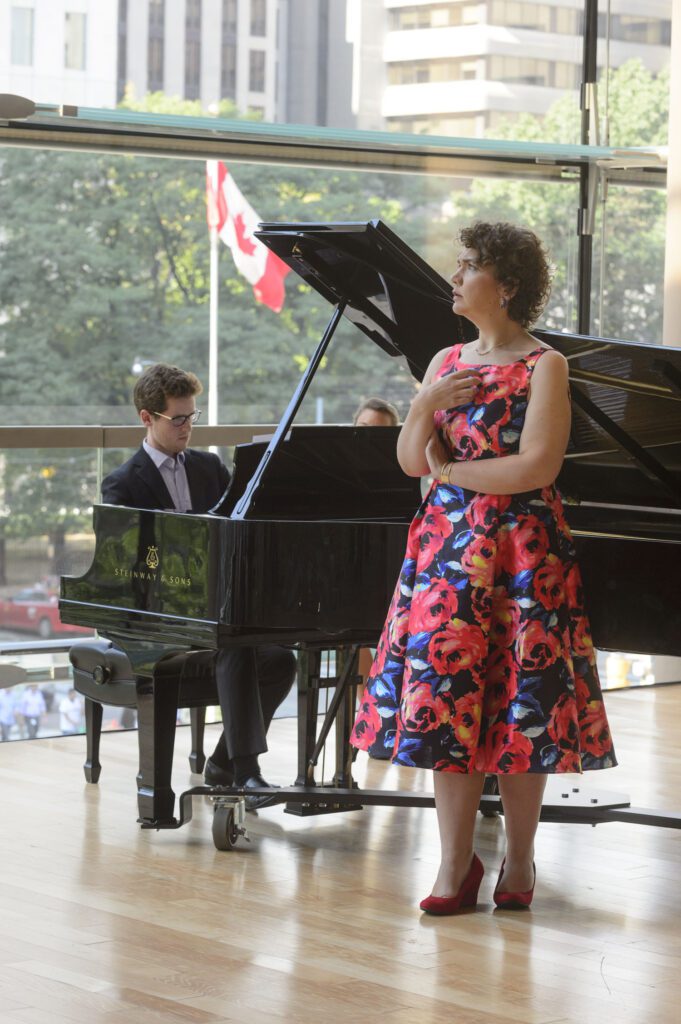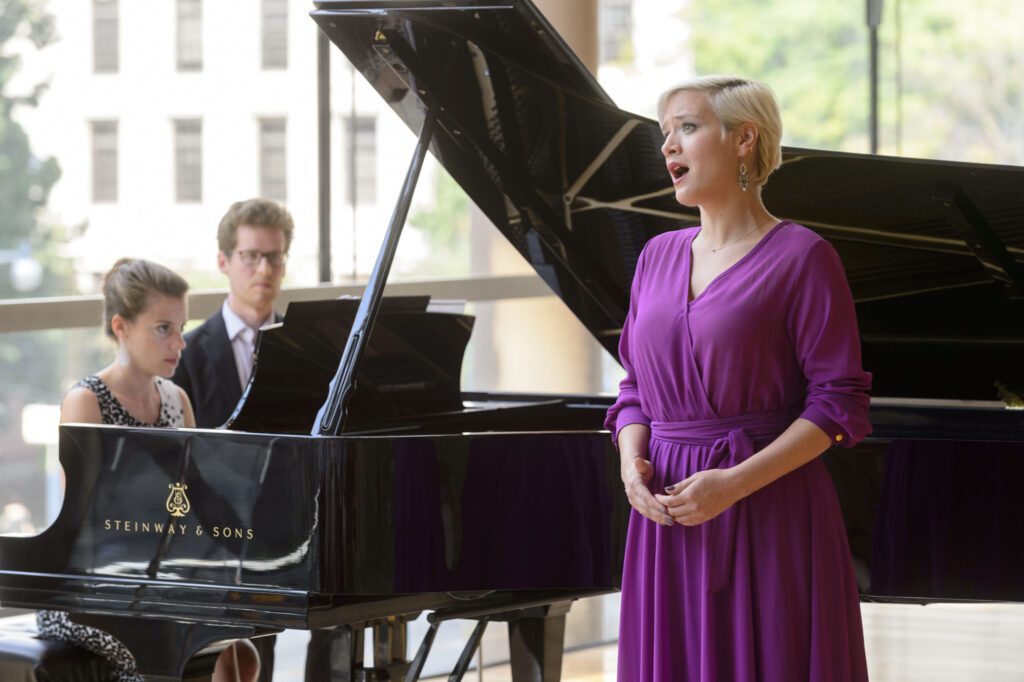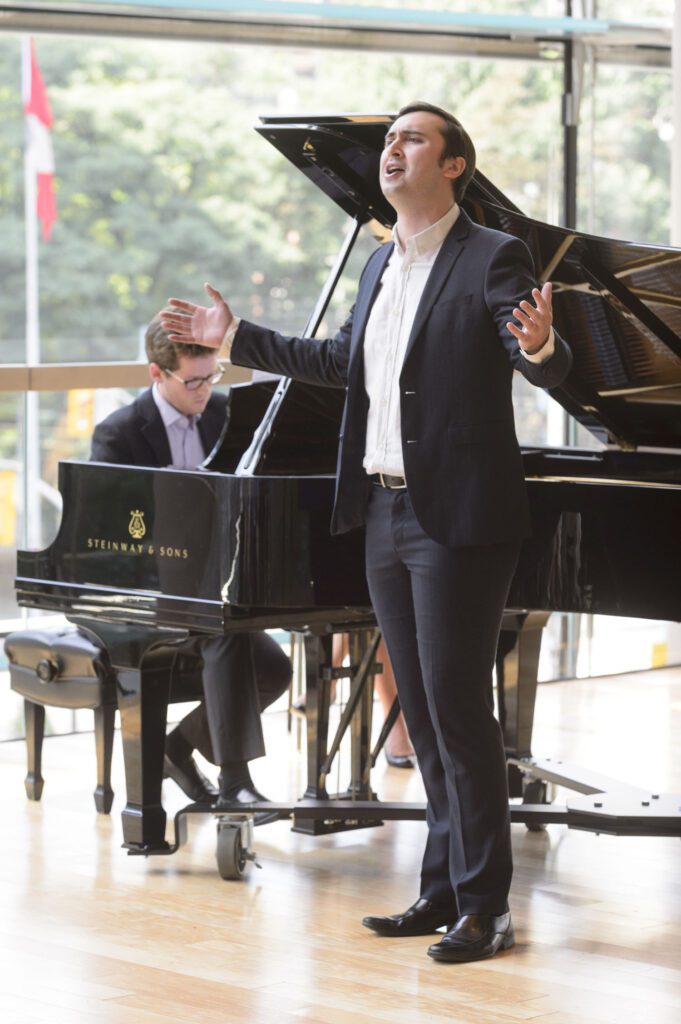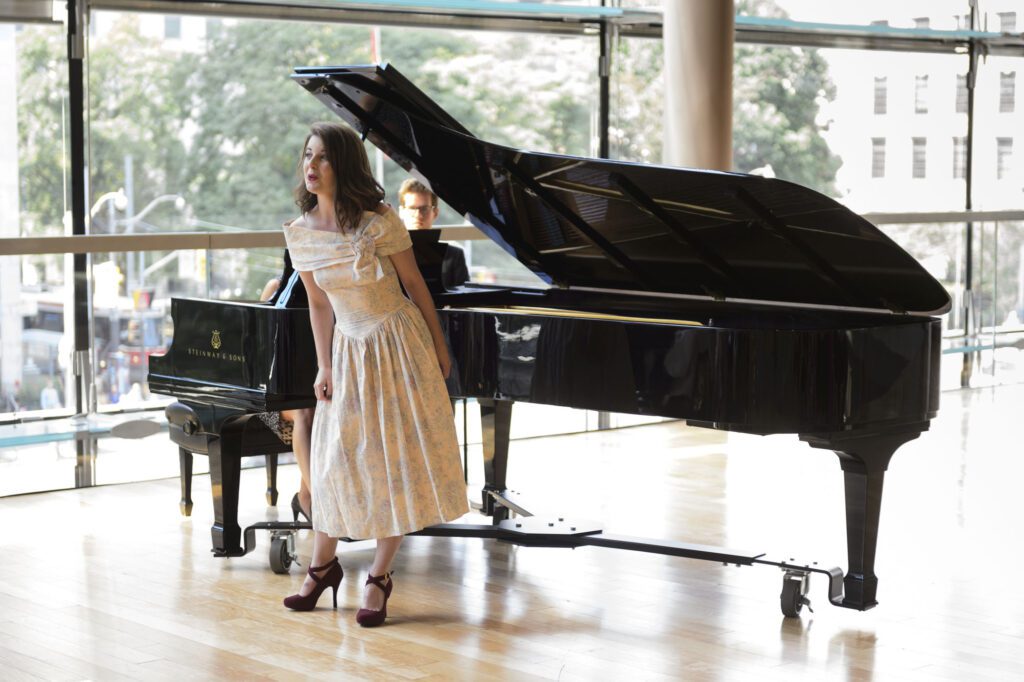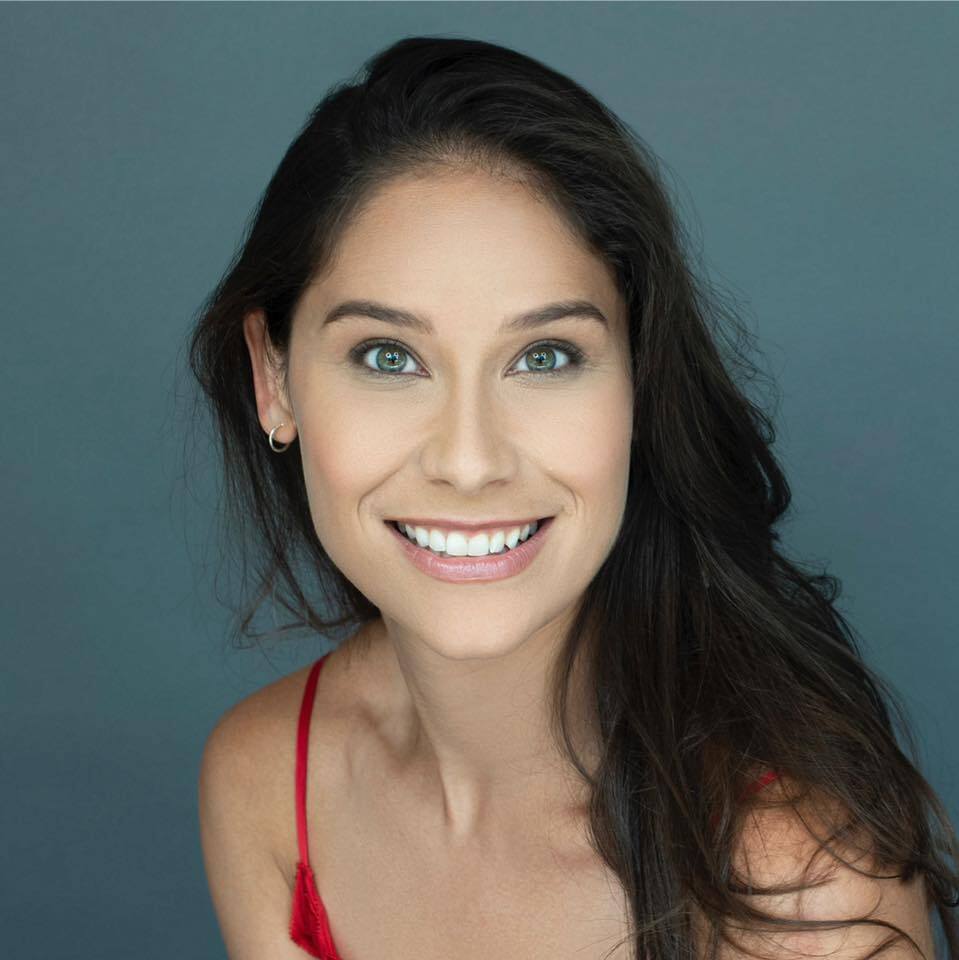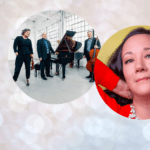For the past 12 years, the annual ‘Meet the Young Artists’ recital that kicks off the Canadian Opera Company’s Free Concert Series has signalled the start of the opera season in Toronto. On September 26, the latest crop of uber-talented Canadian opera singers and pianist-coaches from the COC’s Ensemble Studio entertained a near-capacity audience at this most welcoming and accessible of musical events.
First up was soprano Danika Lorèn with “Deh vieni non tardar” from Mozart’s The Marriage of Figaro, a lyric soprano audition staple that received an anything-but-routine rendition here. Sung with a gorgeous, unforced tone, Lorèn engaged the audience with subtle acting—making a clear distinction between feigned anticipatory lust for the Count in the aria’s recitative, and the more sincere declarations of love to her eavesdropping husband, Figaro, in the aria proper. She even treated the audience to a historically-informed cadenza near the aria’s close.
One of this season’s new Ensemble members is baritone Samuel Chan. He bravely chose to introduce himself to the Four Season’s Centre for the Performing Arts audience with an early Puccini rarity, “Questo amor, vergogna mia” from Edgar. Chan demonstrated a good sense of verismo style, generously applying rubato (gradual slowing, then speeding up) and portamento (a classy sliding between notes). Ensemble debutante pianist Rachael Kerr was completely in tune with her singer, allowing him the ebb and flow required by this style. Chan’s robust tone occasionally thinned out in the upper reaches of his range, but overall conveyed the aria’s fraught drama with specificity of intent.
Dramatic soprano Samantha Pickett (singing on her birthday!) explored another lesser-known aria by that other Italian opera titan, Verdi, with “Non so le tetre immagini” (Il Corsaro). Pickett took vocal risks and emerged mostly unscathed, with beautiful hushed dynamics in the opening recitative and a textbook messa di voce (gradual swelling and diminution of tone) towards the aria’s conclusion. Some of the tricky coloratura (decorative, staccato) passages were approached hesitantly, but greater security will no doubt come as Pickett grows with this aria, one so well suited to her vocal fach (category).
What gorgeous, rich tone poured out of mezzo-soprano Megan Quick in Saint-Saëns’ chestnut, “Mon cœur s’ouvre à ta voix” (Samson et Dalila)? Hers must be very close to the ‘Falcon’ voice-type favoured by French Romantic composers who created roles like Dalila which require the resonant, dark timbre of a mezzo coupled with the bigger tone of a heavier, spinto soprano. Quick’s facial expressions transmitted her deep, emotional connection to the text, and a few instances of under pitch singing can no doubt be attended to in the practice room.
Lauren Eberwein may be a 2nd year Ensemble member, but this was her first official public outing as a soprano, having left her former mezzo self behind. Changing vocal categories is never easy and Eberwein bravely decided to sing a soprano calling card: Pamina’s lament, “Ach, ich fühl’s,” from Mozart’s The Magic Flute. She sounded most comfortable when singing in her middle range, approaching the higher-lying passages with some caution—but even this early in her vocal transformation, she demonstrated a lovely, delicate, upper range which will be exciting to hear develop. Props to the fabulous mauve dress/hair pairing!
Bruno Roy’s high-placed, clear-toned baritone, like Quick’s characteristic vocal colour, is ideally suited to the repertoire he chose—the tower scene from Debussy’s Pelléas et Mélisande. Pelléas is part of that exclusive category of roles intended for a baryton martin, yet another particularly French voice type; one that constantly stretches the baritone into higher, tenor territory. Roy handled this masterfully, and as a native Francophone, delivered the all-important text idiomatically and expressively. Of all the singers, he was particularly adept at conveying immersive drama, even without sets or props.
Last but not least was another new Ensemble member, mezzo-soprano Simone McIntosh. If she was experiencing any nerves regarding her debut they weren’t evident; she delivered Rosina’s challenging double aria from Rossini’s The Barber of Seville with pointed wit and virtuoso vocalism. Her brand of clean, bright tone is perfect for navigating the demanding runs, staccati and high notes demanded in the bel canto repertoire.
Pianists Kerr and the returning Stéphane Mayer were the afternoon’s unsung heroes, always supportive with their considerable skill and collaborative spirit. A lot of their work happens behind the scenes—coaching the singers on rhythm, diction, and musicality—yes, it takes a (very large) village to produce artists of the calibre heard in this recital.

